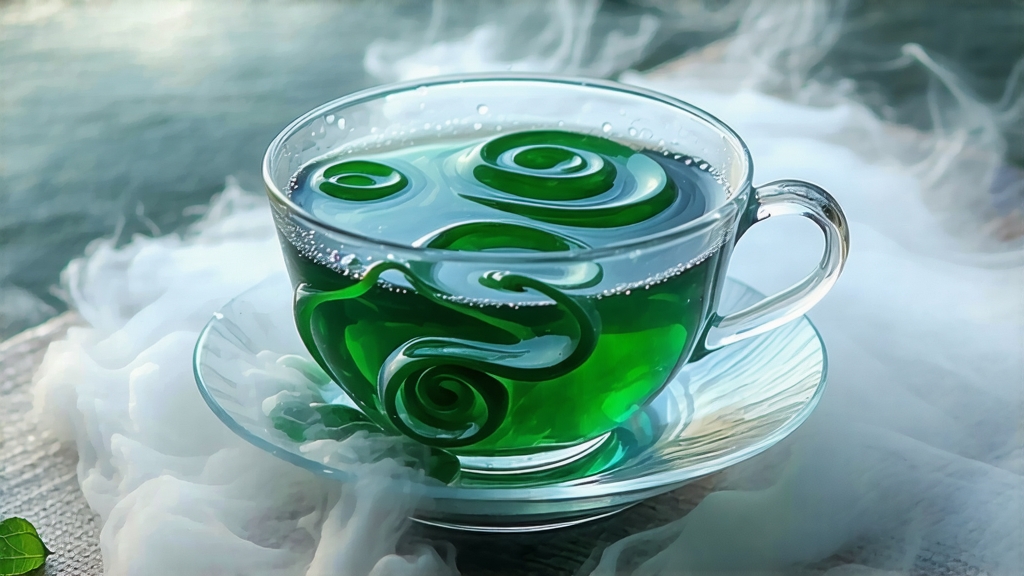
Biluochun, whose name translates literally to “Green Snail Spring,” is one of China’s ten most celebrated teas, yet it remains modestly sized—each finished leaf is no longer than a fingernail and curls into a tight spiral resembling a tiny snail shell. Grown in the mist-laced foothills that ring Taihu Lake in Jiangsu Province, this green tea has captivated emperors, poets, and modern connoisseurs for over a thousand years with its unmistakable orchid-and-apricot fragrance and a sweetness that lingers like a soft flute note. To understand Biluochun is to listen to a spring dialogue between soil, water, micro-climate, and human hand; every step from garden to gaiwan is calibrated to preserve a single ephemeral moment—the first flush of March.
Historical whispers place Biluochun’s birth during the late Tang dynasty, when local hill farmers noticed that wild tea trees growing among peach, plum, and apricot groves produced leaves of unusual aroma. The fruits were in blossom at the same time the tea buds emerged; cross-pollination and shared dew imbued the leaf with a natural floral tone. By the Qing dynasty the Kangxi Emperor, on a southern inspection tour, tasted the tea and declared its original name “Xia Sha Ren Xiang” (literally “scary fragrance”) too inelegant for imperial lips; he renamed it Biluochun to honor its shape and season. The tribute status that followed turned tiny Dongting Mountain villages into carefully guarded gardens; even today the 2,000 mu (about 133 hectares) of core-origin groves are protected by provincial law, and every spring the harvest is monitored by tea police who seal each sack with an anti-counterfeit QR code.
Although all Biluochun comes from the Taihu micro-zone, two broad styles have emerged. The “Original Mountain” type is picked on Dongting’s East and West mountains—true terroir islands reachable only by boat. Here the soil is a loose, slightly acidic sandy loam rich in quartz and iron; constant lake humidity refracts sunlight, slowing photosynthesis and concentrating amino acids. The result is a downy bud so tender it can be infused with cool (75 °C) water and still deliver broth-like sweetness. “Nearby Upland” gardens on the surrounding mainland produce a slightly sturdier leaf; they still follow the same craft protocol but yield a cup with more vegetal edge and less overt fruit. Purists compare the two to Grand Cru versus Village Burgundy: both authentic, yet speaking different dialects of the same flavor language.
Crafting Biluochun is a race against dawn. Picking begins at 5 a.m. when the mountain air is 10 °C and bud moisture is high; only the standard “one bud with one unfolding leaf” is plucked. By 9 a.m. the baskets must reach the village pan-firing sheds, where 200 °C woks await. A master kill-green (shaqing) lasts exactly 3½ minutes: the tea maker tosses 250 g of leaves with bare hands, clapping them against the iron to rupture edge cells while keeping the core intact. The wok temperature is then dropped to 70 °C for the first “rub and curl” step; palms press the leaves along the wok’s wall in a clockwise spiral, coercing the bud to tuck into itself. This motion, repeated 6–7 times over 25 minutes, is what gives Biluochun its iconic snail shape. Finally the leaves are slow-dried for 40 minutes over a charcoal brazier covered with white ash; the fire is so gentle one can lay a palm on the bamboo tray without flinching. When finished, 1 kg of premium Biluochun contains roughly 70,000 buds—each one a hand-signed miniature sculpture.
Water choice is non-negotiable. The classical text “Cha Shu” advises “Taihu water for Taihu tea,” so purists draw lake water from the same eastern shore where the tea grows, letting it rest overnight in unglazed clay jars to flatten chlorine notes. Internationally, the closest approximation is low-TDS spring water with a neutral pH; avoid hard water, which dulls the orchid top note. Heat to 80 °C for island-grade buds, 85 °C for upland. A tall, thin glass—preferably 250 ml—allows the spirals to dance vertically,